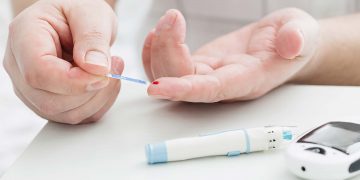Why are pre diabetes symptoms considered to be the silent assassin?
The simple answer could be because you can suffer from the unnoticeable symptoms of pre diabetes for up to ten years without ever realising that your health is deteriorating and that you may eventually suffer from the chronic illness called diabetes mellitus.
The symptoms are normally not noticeable until it is too late. Whenever you notice the symptoms are when you are being diagnosed with diabetes.
These infamous pre diabetes symptoms are the same as for diabetes type 2 which include: Increased thirst, frequent urination, excessive hunger cravings, unexplained weight loss or weight gain, fatigue, blurred vision, slow healing wounds and frequent infections.
Risk Factors for Pre-diabetes and Type 2 Diabetes
The American Diabetes Association recommends that testing to detect pre-diabetes and type 2 diabetes be considered in adults without symptoms who are overweight or obese and have one or more additional risk factors for diabetes. In those without these risk factors, testing should begin at age 45.
Risk factors for pre-diabetes and diabetes—in addition to being overweight or obese or being age 45 or older—include the following:
- being physically inactive ( a real couch potato)
- having a parent or sibling with diabetes
- having a family background that is African, Caribbean, South Asian, other non Caucasian grouping
- being diagnosed with gestational diabetes—diabetes first found during pregnancy or
- giving birth to a baby weighing more than 9 pounds
- having high blood pressure—140/90 or above—or
- being treated for high blood pressure
- having an HDL, or “good,” cholesterol level below 35 mg/dL or
- a triglyceride level above 250 mg/dL
- having polycystic ovary syndrome, also called PCOS
- having impaired fasting glucose (IFG) or impaired glucose tolerance (IGT) on previous testing
- having other conditions associated with insulin resistance,
- severe obesity
- acanthosis nigricans
- having a history of cardiovascular disease
If test results are normal, testing should be repeated at least every 3 years. Health care providers may recommend more frequent testing depending on initial results and risk status.
Source: diabetes.niddk.nih.gov
Can pre diabetes symptoms be reversed?
Yes it sure can. Physical activity and weight loss help the body respond better to insulin. By losing weight and being more physically active, people with pre-diabetes may avoid developing type 2 diabetes.
The summary below is the result of studies carried out. One such study is called the diabetes prevention program.
The Diabetes Prevention Program (DPP) and other large studies have shown that people with pre diabetes symptoms can often prevent or delay diabetes if they lose a modest amount of weight by cutting fat and calorie intake and increasing physical activity—for example, walking 30 minutes a day 5 days a week.
Losing just 5 to 7 percent of body weight prevents or delays diabetes by nearly 60 percent.
In the DPP, people aged 60 or older who made lifestyle changes lowered their chances of developing diabetes by 70 percent.
Many participants in the lifestyle intervention group returned to normal blood glucose levels and lowered their risk for developing heart disease and other problems associated with diabetes. The DPP also showed that the diabetes drug metformin reduced the risk of developing diabetes by 31 percent.
People with pre diabetes can help their body use insulin normally by being physically active, making wise food choices, and reaching and maintaining a healthy weight. Physical activity helps muscle cells use blood glucose for energy by making the cells more sensitive to insulin.



















